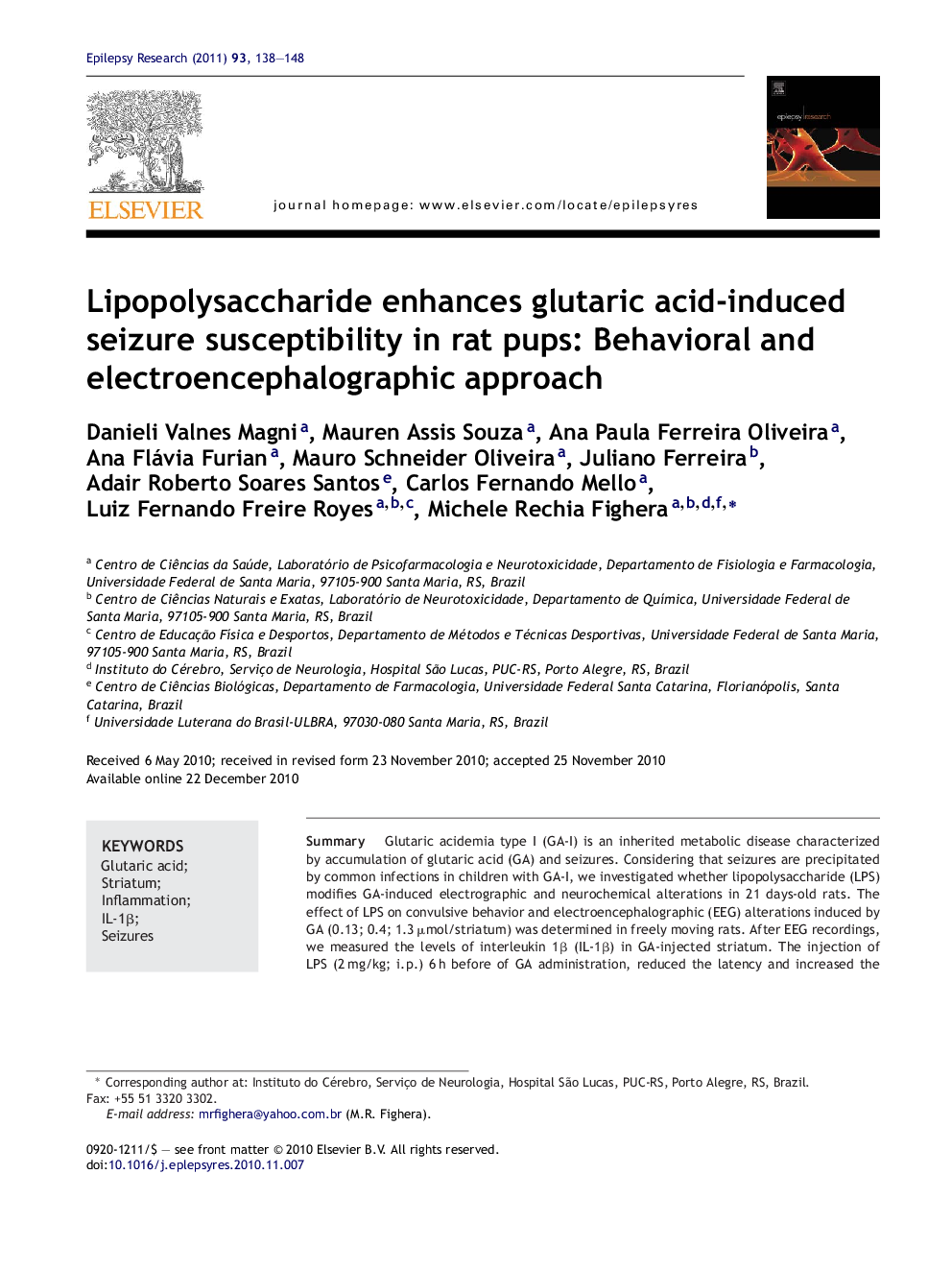| Article ID | Journal | Published Year | Pages | File Type |
|---|---|---|---|---|
| 6016253 | Epilepsy Research | 2011 | 11 Pages |
Abstract
Glutaric acidemia type I (GA-I) is an inherited metabolic disease characterized by accumulation of glutaric acid (GA) and seizures. Considering that seizures are precipitated by common infections in children with GA-I, we investigated whether lipopolysaccharide (LPS) modifies GA-induced electrographic and neurochemical alterations in 21 days-old rats. The effect of LPS on convulsive behavior and electroencephalographic (EEG) alterations induced by GA (0.13; 0.4; 1.3 μmol/striatum) was determined in freely moving rats. After EEG recordings, we measured the levels of interleukin 1β (IL-1β) in GA-injected striatum. The injection of LPS (2 mg/kg; i.p.) 6 h before of GA administration, reduced the latency and increased the duration of seizures induced by GA (1.3 μmol/site). In addition, LPS administration increased IL-1β striatal levels, which positively correlated with total time in seizures. The intrastriatal injection of an IL-1β antibody (200 ng/2 μl) prevented the facilitation of GA-induced seizures by LPS. These data suggest that inflammatory processes during critical periods of development may decrease GA-induced seizure threshold.
Related Topics
Life Sciences
Neuroscience
Neurology
Authors
Danieli Valnes Magni, Mauren Assis Souza, Ana Paula Ferreira Oliveira, Ana Flávia Furian, Mauro Schneider Oliveira, Juliano Ferreira, Adair Roberto Soares Santos, Carlos Fernando Mello, Luiz Fernando Freire Royes, Michele Rechia Fighera,
